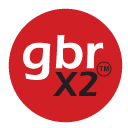Gerber format
 |
|
| Filename extension | .gbr |
|---|---|
| Internet media type | application/vnd.gerber |
| Uniform Type Identifier (UTI) | com.ucamco.gerber.image |
| Developed by | Ucamco (Initially by Gerber Systems Corp.) |
| Initial release | August 27, 1980 |
| Latest release |
Revision 2017.03
(March 8, 2017) |
| Type of format | Image file format |
| Standard | Gerber Format Specification |
| Website | https://www.ucamco.com/en/file-formats/gerber |
The Gerber format is an open ASCII vector format for 2D binary images. It is the de facto standard used by printed circuit board (PCB) industry software to describe the printed circuit board images: copper layers, solder mask, legend, etc.
Gerber is used in PCB fabrication data. PCBs are designed on a specialized electronic design automation (EDA) or a computer-aided design (CAD) system. The CAD systems output PCB fabrication data to allow manufacturing. This data typically contains a Gerber file for each image layer (copper layers, solder mask, legend or silk...). During bare board fabrication Gerber is the standard input format for photoplotters and all other fabrication equipment needing image data, such as legend printers, direct imagers or automated optical inspection (AOI) machines or for viewing reference data in different departments. Gerber files also contains a 'stencil' layer for solder paste and the central locations of components to allow the PCB assembler to create the stencil and place and bond the components.
There are two major generations of Gerber format:
The standard file extension is .GBR or .gbr though other extensions are also used.
PCBs are designed on a specialized electronic design automation (EDA) or a computer-aided design (CAD) system. The CAD systems PCB fabrication data to allow fabrication. Fabrication data contains a Gerber file for each image layer (copper layers, solder mask, legend or silk...). Drilled hole information is also transferred in Gerber but for historic reasons the Excellon format is often used. Typically, all these files are "zipped" into a single archive that is sent to the PCB bare board fabrication shop. The fabricator loads them into a computer-aided manufacturing (CAM) system to prepare data for each step of the PCB production process.
...
Wikipedia
